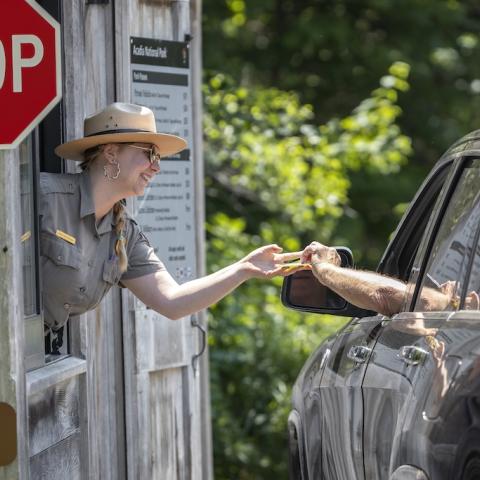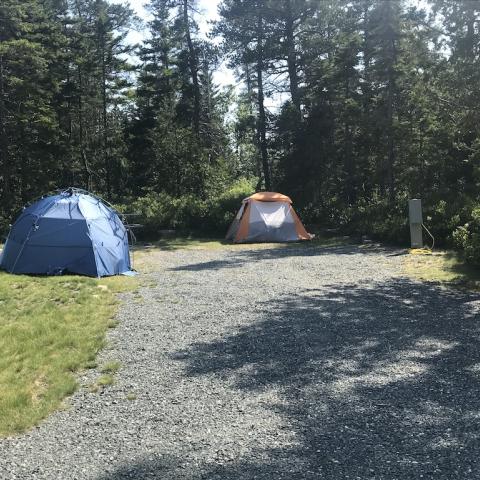
Ranger Michael Marion talks about the history of Baker Island in Acadia National Park while leading a tour. Friends of Acadia has provided funds to help preserve the island’s historic structures/FOA, Julia Walker Thomas
A visit to Acadia National Park can take you back to the 19th century if you make the journey out to Baker Island. Home to a lighthouse at the southern entrance to Frenchman Bay, the island was also a backdrop to generations of the Gilly family, which lived on the island for 123 years running. But time has taken a toll on the island's structures, some of which contained hazardous materials.
During the past year the Park Service staff at Acadia began tackling some of the restoration work at Baker Island. Provided with funding raised by Friends of Acadia, the agency was able to assess the presence of hazardous materials, including lead paint, asbestos, and universal waste such as petroleum products and mercury switches. Licensed contractors removed asbestos roof shingles from the oil shed, enabling the park service to repair the leaking roof with cedar shingles and prevent further degradation, according to the friends group.
Asbestos was also found in the keeper’s house in floor tiles, pipe insulation, and the stove thimble, notes a story in the winter issue of the Friends of Acadia Journal. A treatment or removal plan has not yet been decided.
According to Friends of Acadiam "(T)he historic structures on the island date mostly from the mid- to late 1800s and have been closed to the public due to hazardous materials and conditions. Great strides were made in 2019 by the National Park Service toward protecting the historical integrity of these structures and making them safer for the public to enjoy."
In addition to the funding provided for the restoration work, the friends group also provided $34,242 toward the production of detailed drawings and a conditions assessment report of the lighthouse tower, the keeper’s house, the oil shed, and the fuel house. That funding in turn leveraged $28,000 in federal contributions from Acadia’s entrance fees.
The National Park Service’s Historic Preservation Training Center will be working through February 2020 to document the conditions of the facilities and prepare recommendations for treatment and future uses for each building. The report will serve as the roadmap for future stabilization and restoration.




 Support Essential Coverage of Essential Places
Support Essential Coverage of Essential Places







Comments
How do I get out to this lighthouse in the spring???
Bernie